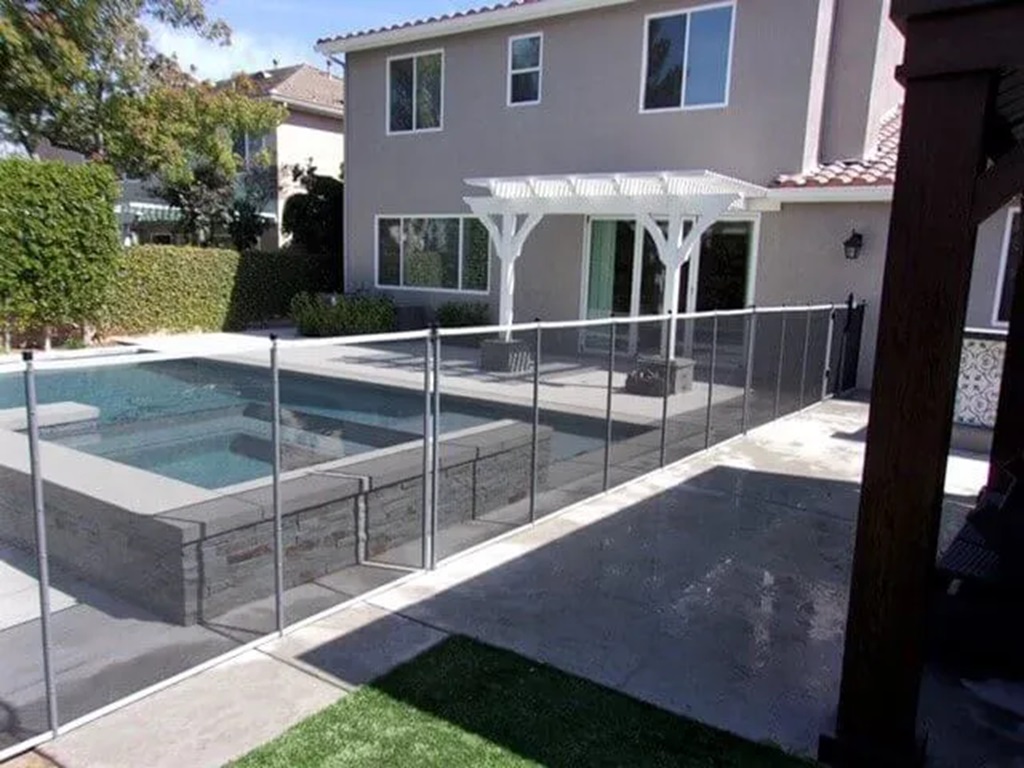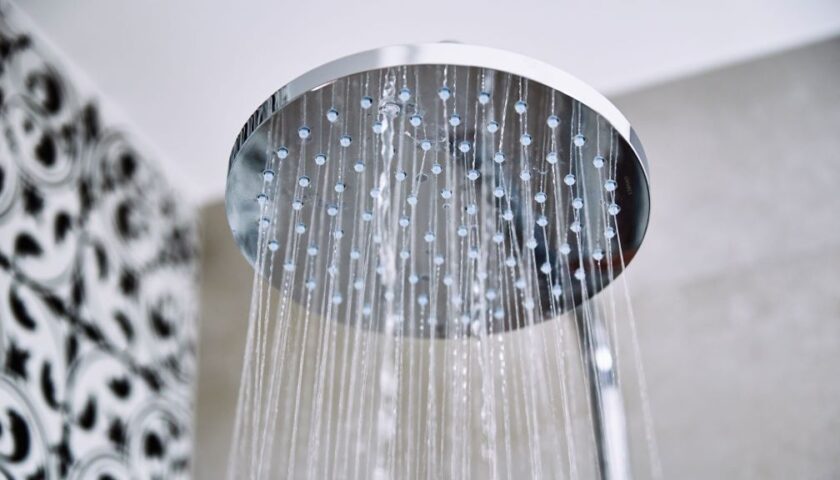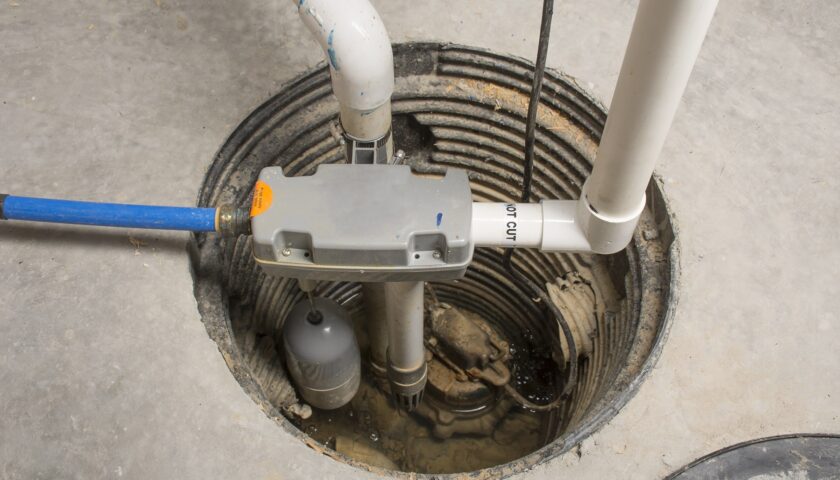Having a pool in your backyard can be a fun and relaxing addition to your home. However, pools can also be dangerous, especially for young children. Installing a proper pool fence is crucial for safety and is often legally required. While pre-made pool fences can be expensive, there are many cheap DIY pool fence options for creative homeowners. With a little effort and imagination, you can create an affordable pool barrier that looks great and meets safety codes.
Why Proper Pool Fencing is Essential
A pool fence acts as a protective barrier around your pool area. It prevents unauthorized access, keeping kids and pets safely away from the water when not supervised. According to the US Consumer Product Safety Commission, a properly installed pool fence can reduce the risk of childhood drowning by up to 90%. Most areas legally require 4-sided fencing with self-closing and self-latching gates. Before selecting a DIY pool fence, check your local regulations.
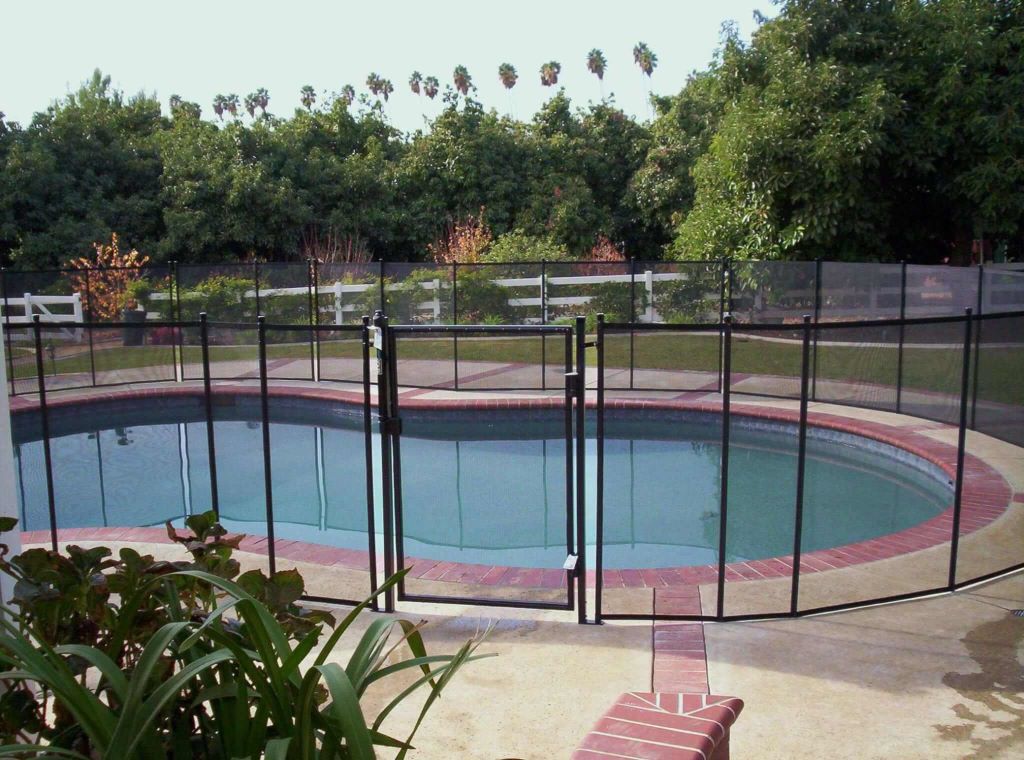
Planning Your Layout
When deciding on your pool fence design, there are a few key factors to consider:
- Area to enclose – Measure the total perimeter surrounding the pool. Account for any decks, patios or large landscaping features.
- Gate locations – Gates should open outward from the pool and have latches higher up out of a child’s reach.
- Local requirements – Check your county or city codes for the legal specifications like minimum height and approved materials. Many areas mandate 4 foot tall fencing.
- Yard aesthetic – Choose a style that complements your existing landscaping. A chain link fence may be affordable but might not suit your yard’s look.
- Future plans – If you may make changes like adding a patio later on, opt for a modular and adaptable pool fence.
Proper planning and measuring ahead of time ensures your DIY pool fence project goes smoothly and meets all safety codes.
Budget-Friendly DIY Pool Fence Materials
You can create an attractive pool barrier without breaking the bank. Some cost-effective material options include:
Wood
Wood is a classic fencing material that can be customized to suit your yard. Pressure-treated pine is affordable and durable outside. Cedar and redwood are naturally weather-resistant choices that require less maintenance. Salvaged wood from old structures or pallets can also be repurposed into a rustic pool fence on a budget.
Bamboo
For a natural look, bamboo sections make a lightweight and sustainable pool fence. Bamboo is inexpensive, grows quickly and weathers well outdoors. Stain the poles for extra protection. The hollow stems can be cut to size and wired together.
PVC
For a low-maintenance option, vinyl PVC fence sections are available at most home improvement stores. While not as durable as wood, PVC resists moisture, termites and rotting. Sections click together for simple DIY installation and can mimic a classic picket design.
Wire Fencing
Welded wire fencing is very affordable and comes in tall galvanized panels up to 6 feet high. It can be attached to wooden or metal posts. For safety, select a small mesh size of 1 inch or less. Add decorative slats or privacy mesh onto the wire for an upgraded look.
Concrete Blocks
Plain cement blocks when stacked up make a sturdy and utilitarian pool barrier. Or get creative with a mosaic design using colored glass bottles embedded into the blocks. Stucco or tile can be applied to beautify the concrete wall surrounding your pool.
Pallets
Wooden pallets are available for free or cheap. Disassemble and flatten the pallets to create fence boards. Add decorative touches like paint, custom wood planks or lattice to spruce up the simple pallets. Anchor to posts or attach the boards right to your existing fence line.
Choosing the right materials for your DIY pool fence depends on your specific needs, budget and style. While wood is attractive, it requires more maintenance. Chain link fences are very affordable but lack privacy. Get creative combining different materials to build a safe barrier that fits your yard and budget.
Easy DIY Fence Designs to Try
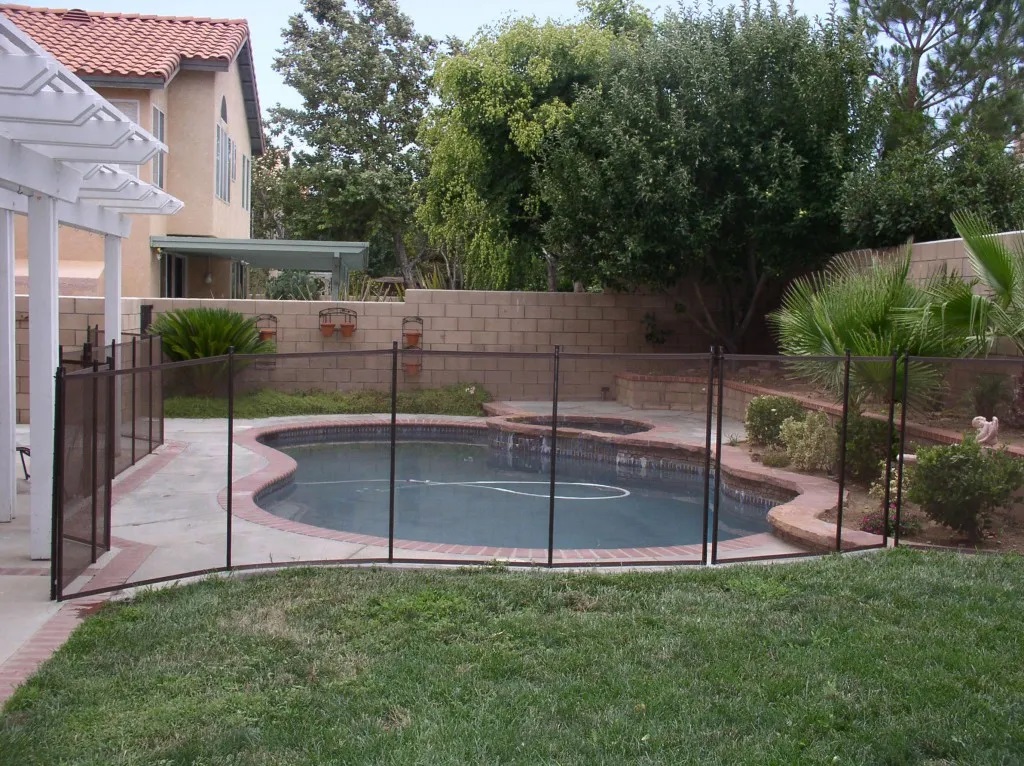
Building your own pool fence is a simple weekend project using these easy yet eye-catching designs:
Framed Lattice
Connect pressure-treated 4×4 posts with 2×4 frames. Fill the frames with lattice panels, leaving a 2-inch spacing between for drainage. Paint or stain the whole fence in your color scheme for a cohesive look. The lattice adds airy visual appeal while maintaining safety and privacy.
Overlapping Fence
Space 6-foot cedar fence boards with even gaps of 1-2 inches, then screw them to wooden fence posts. Overlap the next row by half, alternating boards to cover the gaps. Matching 1×2 inch trim pieces on the fence boards adds depth. The overlapping brickwork pattern looks upscale for less.
Pallet Slat
Deconstruct pallets by removing the slats with a pry bar. Reattach individual slats to a basic frame to mimic a classic picket design. Keep the natural wood color for a rustic vibe or dress it up with a bold painted pattern. This recycled pallet fence is eco-friendly and wallet-friendly.
Decorative Blocks
Stack concrete blocks, then add character by affixing decorative materials like colored glass, seashells or ceramic tiles. If using cement blocks alone, consider rendering a pattern with paint for visual interest. Accent with planters and vines growing through the blocks for extra charm and security.
Cable Rail
Install wood posts at least 3 feet in the ground. String galvanized wire cable between posts in a criss-cross pattern. Choose thicker 3/16 inch cables that are much harder to climb than chain link. The simple cable fencing is see-through and complements modern backyard designs.
With imagination and elbow grease, you can build a functional pool fence that expresses your personal style. Customize these designs to match your home or backyard theme.
Safety Tips for DIY Pool Fences
When installing your own pool barrier, be sure to:
- Check local building codes for legal height, depth and gate requirements
- Select weather-resistant, durable materials like pressure-treated wood
- Dig fence posts at least 2 feet deep for sturdiness
- Space pickets less than 4 inches apart to not allow a child to squeeze through
- Use self-closing hinges and childproof latches on all gates
- Check for any accidental hand or footholds in the design
- Set up interior perimeter fencing along with exterior backyard fencing for full enclosure
- Mount the latch at least 54 inches high, out of a small child’s reach
- Ensure the latch mechanism cannot be reached through any fence gaps
- Arrange landscaping so no objects sit near the fence to assist in climbing
Following basic safety measures will keep your DIY pool fence securely protecting your loved ones. Consult your local building authority if unsure whether your planned design meets all codes. With attentive planning and secure construction, a homebuilt pool fence can provide peace of mind.
Maintaining Your Pool Fence Over Time
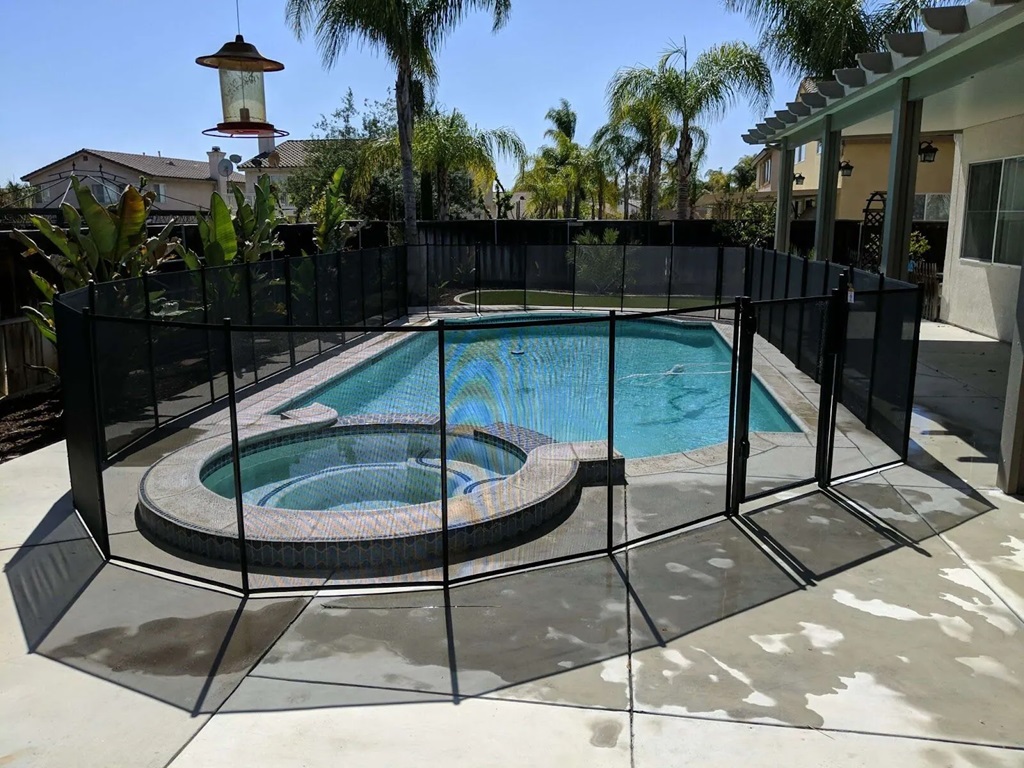
A well-built pool fence needs some simple maintenance to stay operational and look its best for years:
Inspect Often
Periodically inspect all sides of the fence for any cracks, rotting wood or corrosion. Check for missing screws, loose or warped boards, and damaged posts. Promptly repair any compromised sections that could allow unimpeded access.
Clear Away Debris
Remove fallen leaves, branches or other debris that collects along the bottom of the fence perimeter. Keeping vegetation trimmed back from the barrier helps prevent climbing or hiding spots.
Weatherproof regularly
Reseal wood fencing with waterproof sealants to prevent moisture damage, warping and mold growth. Recoat painted surfaces when flaking and touch up any rusted sections on metal fences.
Test Latches
Test all entry gates regularly to ensure latches fully engage and self-close every time. Lubricate hinges as needed to prevent sticking. Adjust and tighten any loose bolts securing doors or gate posts over time.
Update Landscaping
As trees and plants mature, prune back branches overhanging the fence. Remove climbing aids like vines on the barrier and trim ground level brush away. Check for new hidden footholds created as landscapes change.
With consistent inspection and care, your homemade pool fence will maintain safety and function for years to come.
5 Common Mistakes to Avoid with DIY Pool Fences
When erecting your own pool barrier, watch out for these frequent pitfalls:
Skipping Local Permitting Rules
Many municipalities require acquiring a permit before installing or modifying a pool fence. Building codes dictate legal fence heights, setbacks and gating based on pool size. Don’t skip this important step or your DIY project may need costly revisions later!
Using Subpar Materials
Flimsy, weak or biodegradable materials will undermine safety. Don’t rely on twine, rope, canvas sheets or scrap wood, which can easily fail when exposed to weather and repeated use. Choose quality, durable and tamper-proof materials.
Leaving Gaps
Any openings or missing slats wider than 4 inches allow small bodies to potentially slip through. Leave no more than a 1-1/2 inch gap between vertical boards according to code requirements. Check for any gaps beneath the bottom of the fence, too.
Not Securing Gates
Entry gates require self-closing hinges and adequately childproofed latches. Double check the hardware operates properly and can’t be left propped open. Ensure gates open outward toward the yard and not over the pool itself.
Ignoring Interior Fencing
Many homeowners mistakenly assume just installing a perimeter fence is adequate when a 4-sided barrier is actually mandated. Overlooking interior divisions from the home to pool area leaves the backyard open for unsupervised access.
With attentive measuring, precise construction and safety focused decision-making, you can avoid these common pitfalls on your DIY pool fence project.
5 Top Tips for Affordable DIY Pool Fences
Building your own fencing is ideal for sticking to a budget. Here are 5 great ways to cut costs on your DIY pool barrier project:
Use Found Materials
Check Craigslist and Facebook for free or cheap fencing materials being given away in your area. Salvage old wood or metal pieces and repurpose into a new barrier. Upcycle pallets, crates and demolition scraps creatively.
Buy Bundle Discounts
Shop big box stores for fence board or vinyl panel bundles offered at bulk discount pricing. Split costs with neighbors also installing fences. Look for off-season sales on summer landscaping materials.
Extend Existing Fences
Rather than fully enclosing the perimeter, you may be able to simply extend sections of current backyard fencing to meet requirements. Tie into side neighbor fences or just replace a span where needed.
Install Your Own Posts
Having fence companies install the posts can be costly. Save significantly by digging and pouring your own post footings to mount prefab panels or boards on.
Minimize Decorative Touches
Opt for affordable and basic materials without added decorative details that hike up costs. Wait to add ornamental finshes like caps and trim until your budget allows down the road. Focus first on functional safety.
With smart planning, resourcefulness and do-it-yourself elbow grease, you can construct an attractive pool barrier that protects your family without breaking the bank.
Conclusion
Installing protective fencing around your residential swimming pool is a wise investment for safety that prevents tragic accidents. While prefabricated barriers can be expensive, many affordable DIY options exist for handy homeowners. Getting creative with low-cost materials like wood, wire, concrete and recycled pallets allows you to build a compliant pool fence on a budget.
Following basic layout planning, code regulations, and sound construction practices results in an effective barrier that looks great and enhances your backyard oasis for years to come. Proper maintenance and vigilance ensures your homemade pool fence sustains durability and security through every season.
Talk with your local permitting office to ensure your planned DIY pool fence design, height and gates appropriately meet legal requirements. Considering the investment of effort and care involved in maintaining a pool, it’s crucial to factor in additional costs such as pool cleaning. While pondering how much pool cleaning costs, it’s equally important to consult with professionals who can offer guidance not only on maintenance expenses but also on the unique fencing needs for your property. They can assist in creating a safer home for your beloved family, ensuring that the overall investment in your pool includes both enjoyment and peace of mind.
FAQs
1. How much does a DIY pool fence cost?
A DIY pool fence costs $15-30 per linear foot on average depending on materials used. This results in $3,000-6,000 total for a typical backyard pool. However, recycled or found materials can reduce costs further.
2. What is the minimum height requirement for a pool fence?
Most areas mandate a pool fence be at least 48 inches high by code. Some specify 4 feet, so check your local regulations for the minimum legal height.
3. Can I use chicken wire for a pool fence?
While inexpensive, chicken wire is not safe or approved for pool fences. The large hexagon holes and thin gauge allow bending and squeezing through. A tighter wire mesh of 1 inch or less openings is required.
4. How deep should fence posts be buried?
Fence posts supporting a pool barrier should be buried 2-3 feet deep and set in concrete for optimal strength. Use metal post anchors when digging holes in rock.
5. How far from the pool edge must a fence be?
There is no set legal distance a pool fence must be from the pool’s edge. It should fully enclose the perimeter along the backyard property lines wherever situated. Check codes for any special exceptions in your area.

